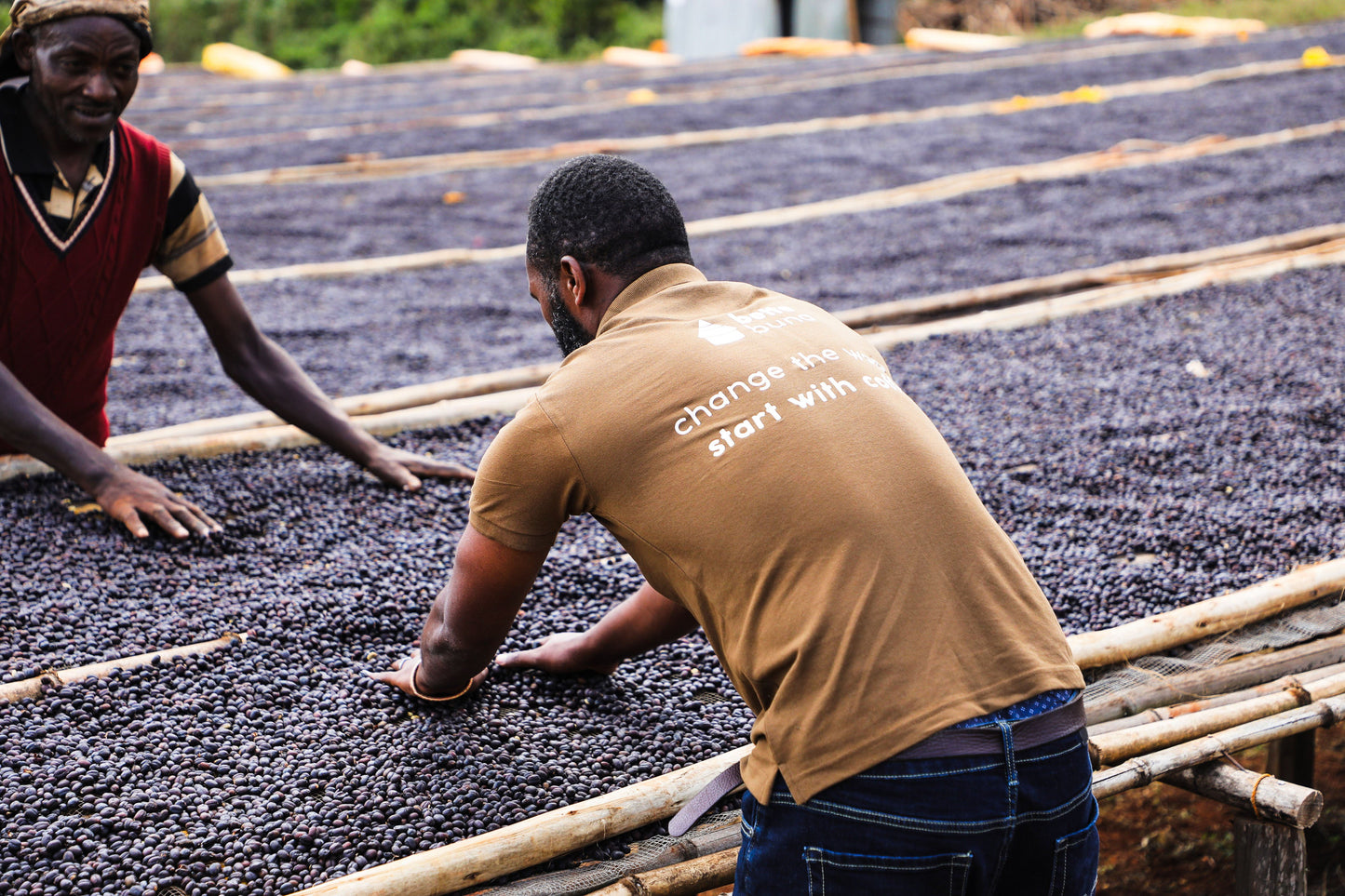







Brew Guide:
Best Brewed with: Suitable for Filter and Espresso
Best Rested for: 2-3 weeks
Light Roaster Influence:
We roast this blend on the lighter side, with the view that it should still work as an all-rounder for both filter and espresso. Try a modern open recipe at 18g in, 45-50g out in 25-30s when brewing as espresso to really open up the flavour, or 60g/L when brewing on filter.
In combining the excellent agronomy and modern processing in these two lots, we’re tasting:
Poached pear, baking spice and jelly tot aromatics, in the cup there's blueberry, plum & baked apple, alongside a white chocolate sweetness. As it cools, unfolding into rhubarb crumble - rich brown sugar oat topping, poached rhubarb, & vanilla custard. Delightfully moreish!
Traceability (Blend Version: 13)
Country of Origin: |
Honduras | Ethiopia |
Blend Percentage: |
66% | 34% |
Region: |
Marcala, Chinacla | Taferi Kela Kebele, D’ara Otilicho Woreda, Sidama |
Producer Group/Washing Station: |
Marysabel Caballero & Moises Herrera |
Dawit & Hester Syoum-Westerveld, |
Varieties: |
Catuaí | Enat Buna (a local landrace), JARC 74112/74158 |
Elevation: |
1560 MASL | 1988-2200 MASL |
Process: |
Traditional Natural: Cherries selectively picked with unripe and overripe cherries separated during harvest and removed. Coffee transported to micromill facilities in Marcala (chosen for optimal weather conditions for drying naturals). Cherries placed on raised African beds with continued selective sorting to remove any remaining unripe or overripe cherries for lot homogeneity. Dried over approximately 25 days (weather dependent). Once dry, coffee stored in GrainPro for a reposado period, pre-milling and export preparation. |
Slow Dried Natural: Ripe cherries picked and delivered to the Bette Buna mill. Cherries floated, skimmed, and laid out on raised beds under shade. Cherries slowly dried for an extended period, with continual sorting. |
Import Partner: |
Nordic Approach | Falcon |
Harvest: |
Crop 24/25. New purchasing relationship | Crop 24/25. Second year working with Bette Buna |
The Story:
Colourful was born out of another concept we wanted to play with, something we felt almost criminally under-explored. There is such huge potential in combining deeply fruity and fun coffees into a blend, yet so often it’s almost seen as sacrilege, that they must be a single origin special release, or else some green coffee buyer secret police will break in and confiscate the sacks back.
Yet who amongst us has not occasionally chucked the remnants of a special bag or two into the grinder, and found the result to be more than the sum of its parts? So in the full rebellious spirit of resisting pretentious coffee traditions, we've sought out the most uniquely fruity and fun coffees to feature in Colourful . There's no denying that the funky, wild profile of an anaerobic or experimentally processed coffee might not be for everyone, or the sort of coffee you drink every single day. However, we believe in their ability to surprise and delight, with the objective to showcase the vibrancy and full dynamic range that coffee has to offer. Like a mug full of pick n’ mix sweets, coffee in full colour (not just black and white!).
So here we have it - Colourful. It's a year-round celebration of colour and flavour, giving us the freedom to source, blend, or even to spotlight single origins under its banner. Colourful isn't dictated by its components; instead, its essence is its flavour profile and the fun we have in creating and selecting for it.
Version 13:
"Your scientists were so preoccupied with whether or not they could, they didn't stop to think if they should."
Ok - we pushed the limit a bit on the last Colourful. We recognise it - some people loved it, we perhaps pushed a few away. We'll likely swap the ratios if we ever do something like that again - 2/3rds clean to 1/3rd intense funk.
Coming in hot we have V13 - double natural. We've got a blend of thirds again - first up 2/3rds Natural Catuaí from the inimitable, one and only Marysabel and Moises Caballero in Honduras. First cupped in the Nordic approach spring cupping, this lot landed up with us through some fortuitous manoeuvres and we knew it was an instant Colourful buy.
Matching the deep winey red fruits and Catuaí caramels, we've got a floral belter from Bette Buna's Taferi Kela. This natural had an extended, slow drying process - drying under shade instead of in full sun. A little extra time for yeast driven surface fermentation, and a little extra enzymatic maceration in the cherry as it dried. Deeply floral and tasting a bit like mixed jelly tots, it's got got the top notes and acidity that perfectly complements the Caballero coffee.
Each lot roasted separately and blended post roast.
- Choosing a selection results in a full page refresh.
- Opens in a new window.








